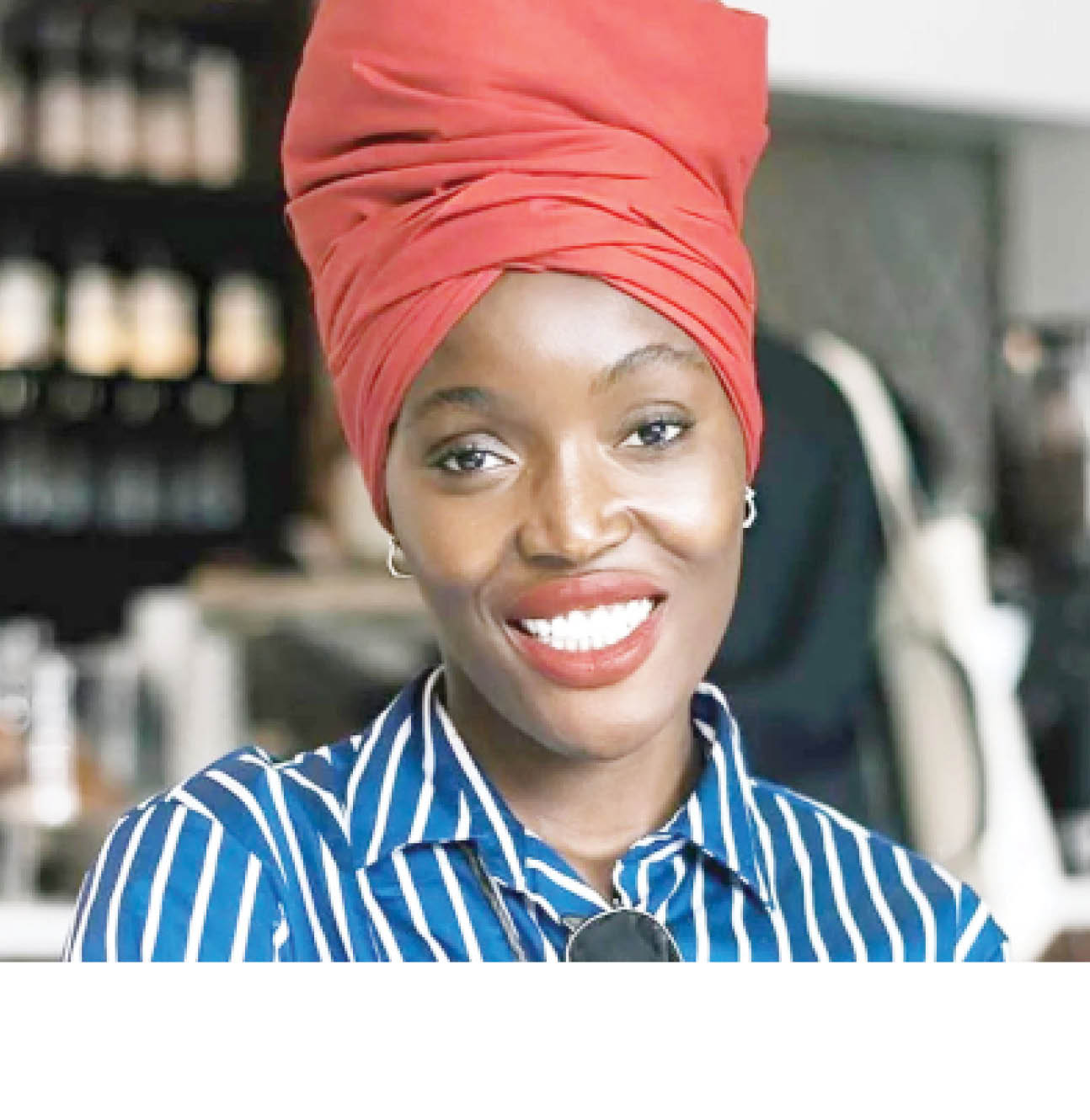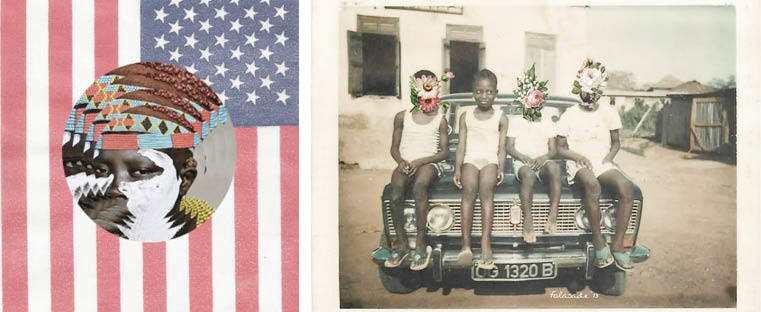Folasade Adeoso Talks Digital Art, Destiny’s Child & Tumblr
Folasade Adeoso is more than ‘just a model’. She’s an artist taking the blogosphere by storm with her digital reappropriations of colonial and fashion photography. People know you as a model, but you also make pieces of digital art which I first saw on Tumblr. When did you start creating in this way, what […]

Folasade Adeoso
Folasade Adeoso is more than ‘just a model’. She’s an artist taking the blogosphere by storm with her digital reappropriations of colonial and fashion photography.
People know you as a model, but you also make pieces of digital art which I first saw on Tumblr. When did you start creating in this way, what compelled you to start and where are you hoping to take your art?
I’ve been making work on my computer in my room for a long time. Way back it was manipulating images of Pharrell or Beyonce. I stopped for a while because I took some time to model and then took time off from modelling for personal reasons. But since taking time off from modelling my work has been getting so much better. I’m not just a model, whatever “just a model” means to you, I have a vision and my vision is my voice. I plan to go to back to school and study graphic design and eventually I want my work to be exhibited. Mainly I want my work to start a dialogue, that’s one of the most important things. For my generation of kids, it’s so easy to make something and put it on the internet for some ‘likes’. I’m beyond that now [laughs].

How do you go about creating your work? How do you find the images and do you sketch before you create?
I can’t draw, I can’t even draw a stick figure! But everything is drawn in my head, my mind is always working. So when I see an image I like, I might stare at it for a day, then save to my computer and start working on it.
Is there a symbolism to the line markings you make on photographs? I notice that faces and heads are often cut or framed by lines.
I draw the lines where I feel. Sometimes I delete them and try again. I don’t know why placement is so key to me. The lines here are connecting by intersecting and suggest a relationship. But mainly I just think what can I do to bring something different to these images? And I start playing with lines and then connecting one line to another. And then I delete, try again, delete, try again. Place a line in another corner, this time making triangles, next time making circles, you know? Sometimes when you make art there doesn’t have to be an explanation, it just happens.
Why are faces of subjects in your images so often obscured?
When I’m looking at an image I try and decide which of the facial expression is the most interesting. I want to tell a different story than the one the photograph originally told, or create a new story within the one that’s already there. This little girl is surrounded by boys, maybe her brothers. She’s the only girl and her face is amazing. I wanted to make a viewer focus on her for a minute, and have her dictate the story that we want to tell when we see a photograph.
You’ve talked about musicians as an inspiration for your work. Does the music you listen to influence you too?
To listen to, I like all genres except for country, I’ve never really been able to get into country. But I like a lot of early 2000’s music, that I grew up on in high school. Like, can I say it? – Ashanti, Ja Rule! [laughs] That was what I was creating to: Destiny’s Child, not the Beyonce, the Destiny’s Child. That’s the kind of music I like listening to. Recently I’ve started listening to jazz, it calms me.
You’re Nigerian-Canadian, was there Nigerian music in your house growing up?
Yes, that’s all I listened to. I tell people, this whole hip hop and R n B thing, it came way later for me. I don’t even know a Keith Sweat song off the top of my head, but I will tell you a Nigerian song that’s stuck in my head because of my mom and my dad. Like Ebenezer Obey, Lágbájá, Sunny Ade, we grow up listening to these songs because our parents listened to them in cars and we went to Nigerian parties. That was it for me. And if it wasn’t Nigerian music it was the easy rock channel and Celine Dion. I really grew up on Nigerian culture, and my [Canadian] friends grew up on that culture. I appreciate the difference of culture that exists even in the same place. This has to be one of my favourites so far. It’s called Her Religion, because I was going back to The Bible, thinking, what if Mary was a black woman – who says she’s not, let’s just say… What if God was actually Mother Nature, and the baby that came out of that union wasn’t Jesus [as we know him] but a woman who’ll become a mother. I say this because our mothers are willing to go on that cross for us, they’re willing to give us everything, they’re willing to forgive us and that’s what Jesus is all about. So I placed this little baby in black Mary’s arms. She’s Jesus and she’s nurturing. You see, she’s already given birth to flowers and she doesn’t even know it: that’s how powerful and she about to be.
Farmers sue Bauchi govt over 10,000ha of allocation
Over 1000 students benefit from scholarship scheme
Why do you choose to work with ethnographic photographs? Are you aiming to reappropriate them in response to the uneven power dynamics (colonialism; ethnographic surveys, etc.) that were the circumstances of their creation?
I’m interested in that, but I also just work on images that catch my eye. Like this one, which I called ‘unionhood’. Every image with the flower faces is saying something about family. So you’ve got ‘Motherhood’ and ‘Fatherhood’ and this was called ‘Unionhood’ because of the union. And his face – you don’t even need to know what she looks like – he is in love with her. I always want to capture the face that contains the most expression so that that person can tell the story. In the original, she’s fixing her hair, but her face doesn’t even matter so much. What I want you to see is him, that he just loves her, to just focus on him. These photos are already art in themselves, and I get to add my own twist.
So Tumblr is really your lifeblood in a way. What are the drawbacks of working like this, publishing work online?
One thing that’s so sad about Tumblr is that credits get lost. I’m learning: I keep the original photoshopped file; I set up my Tumblr page; I’m owning this. I made this image of Grace Jones, using the Bulletproof album cover which I cropped. One day I went on Tumblr and this image had like 2000 reblogs, and I would never had known! People don’t understand, it hurts! I probably didn’t sleep all night because I was making that and you just took it and put it on your blog. Like Erykah Badu said, I’m an artist and I’m sensitive about my shit. [The person apologized & added a credit]
Do you think that’s the main drawback to working primarily on the internet? Also, what about your own images, which work with already-produced photography.
And that’s one thing that hurts me, when people see these images I don’t want anyone to think I own the rights to the original photos, I just own the right to the art I made out of those photos. I didn’t take the original photograph, but what comes after, I own the right to. But some of the originals which I find online . . . there’s no credits online! But what if someday I get successful and someone wants to sue my million-dollar ass for the $1 I have [laughs]. It’s tricky.
Are there any photographers that you work with where it’s more of a collaboration and you can share your own vision for a shoot?
Andre’ Wagner, he is amazing! I did a Fela’s Wives shoot with him and I did the makeup, the styling that was all me. I told Andre’ about it and he said “I’m shooting it!” That’s one person who I can tell my ideas and he sees it, knows how to shoot it and that’s that. But I did the research and everything, although there’s not much of the wives on the internet, you can’t really read up on them as much as you can read up on Fela. But I studied the makeup and did it on my own face. I did the headwraps, jewellery, I went around thrift stores collecting. I have ideas and photographer friends that help me sometimes: Kwesi Abbensetts and Barron Claiborne too. Eventually I want to use the photos that are taken of me and do my artwork around them. Do a shoot specifically just to make art, so that’s one of the next steps.
What do you hope will come of your digital art?
One of my goals is to keep creating. I stopped for a long time because I took some time to model and then took time off from modelling for personal reasons. Since I took time off from modelling my work has been getting so much better. I want my work to be exhibited, of course, but if it’s not, I just want people to be able to have a dialogue. That’s one of the most important things, I want people to express what they see, their perspective. I’m not just trying to draw a pretty picture. I create it, I know what I did, I want somebody to tell me what they see. I want to create a feeling, a mood, a dialogue. And if I can’t get an exhibit, I wanna make an art book and get it published, I’m pretty sure people would wanna buy that book [laughs].
Culled from www.okayafrica.com
